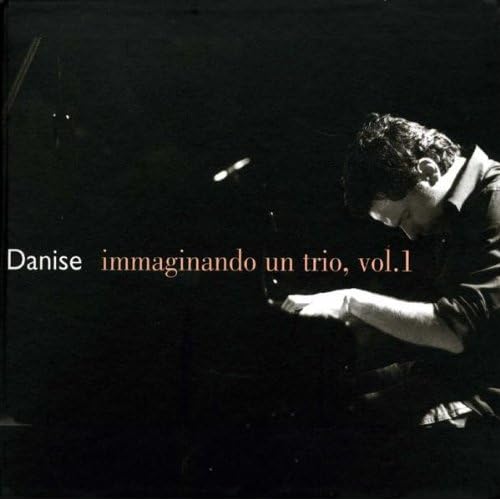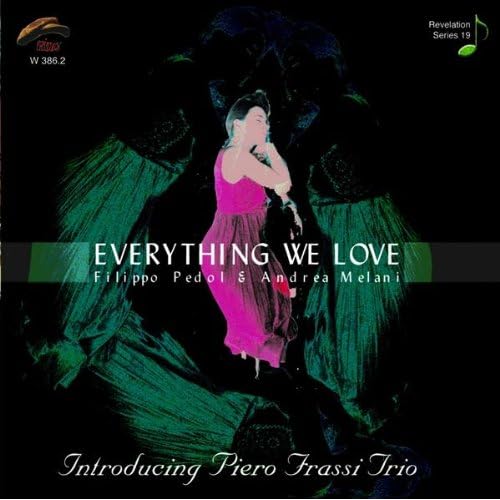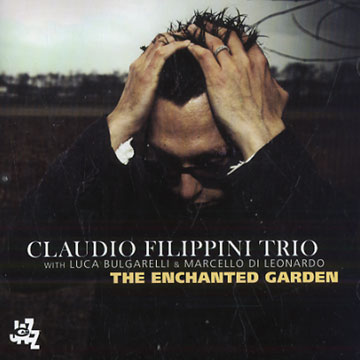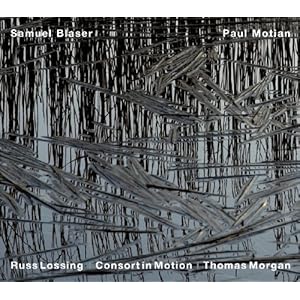Every now and then, I try to select from my cd collection, 10 records that I would take to a desert island.
I don't care when it was made or how many musicians are in it.
What really matters is the joy and eargasm, I get every time the cd spins in my player.
I made some changes from the last Top 10 post ( 2010 ).
You Must Believe In Spring
 By Chris M. Slawecki
By Chris M. Slawecki
After more than a decade as one of the pianist’s most sympathetic bassists, this was Eddie Gomez’s last recording with Evans, a trio set with drummer Eliot Zigmund recorded in 1977 and released after Evans’ death in 1980.
Evans never stopped searching for new ideas. He might be faulted for repeatedly looking for them in the same tunes, but this program is quite varied, including Johnny Mandel’s “Suicide is Painless” (the theme from M.A.S.H. ); Michel Legrand’s title track; Gary McFarland’s waltz “Gary’s Theme,” complementing Evans’ own “B Minor Waltz (For Ellaine),” composed for Evans’ wife; and “We Will Meet Again (For Harry),” Evans’ tribute to his brother.
In Evans’ hands, melodies and time signatures are often more whispered, more shadowed, than stated, as in the opening “B Minor Waltz (For Ellaine)” and the somber, reflective title track, which blossoms, after Gomez’ mid-song solo, like dogwoods on a mid-May morning. Evans boasted such a unique, unmistakable touch—emotional and beautiful and even soft, but never sweet. (Gomez is pretty amazing himself on “M.A.S.H.,” laying down the foundation rock solid yet pushing the music forward, too.)
Among this reissue’s bonus tracks, “Without a Song” is about as ebullient as you’ll ever hear this pianist, and “Freddie Freeloader,” the one track on Miles Davis’ landmark album Kind of Blue where Evans did not play, presents the rare sound of Evans on electric piano.
As a rule, Evans could pick up the program from an elementary school chorus festival and play it inventively and beautifully. This set is no exception.
Track listing:
B Minor Waltz (For Ellaine); You Must Believe in Spring; Gary's Theme; We Will Meet Again (For Harry); The Peacocks; Theme from M*A*S*H; Without A Song; Freddie Freeloader; All of You
Personnel:
Bill Evans, acoustic and electric piano; Eddie Gomez, bass; Eliot Zigmund, drums.
2) Tomasz Stanko Quartet
Suspended Night
 By Jeff Stockton
By Jeff Stockton
If you’re reading this review, there’s little doubt that you consider yourself a jazz fan. And as such, you’ve probably heard a person say to you with all conviction: “I don’t like jazz.” Miles in the ‘50s? Coltrane on Atlantic? What’s not to like? But when I hear this, I usually just let it go, frustrated by past attempts at persuasion, overwhelmed by my own disbelief. Now when this situation arises, however, I can hand them Suspended Night, jazz of delicacy, classical European beauty, sadness and hope.
Ten years ago Stanko, the 50 year old Polish veteran, began playing with a teenage rhythm section, scoring films and performing live fairly close to home. For this, the quartet’s second release for ECM, his band proves to be an ensemble of tight musicianship and sympathetic interaction. The opening piece, “Song for Sarah,” begins with pianist Marcin Wasilewski’s profound lyricism in deft, colorful strokes. Even if you’ve never heard Stanko play a note, you’re immediately drawn in by the cautious tempo and undercurrent of longing. When he does enter, the piano is in perfect complement to Stanko’s slightly roughened tone, honed by years of work and experience. Over and over on this recording the connection between trumpeter and pianist is palpable.
The rest of the CD is made up of ten “Suspended Variations” that integrate bassist Slawomir Kurkiewicz, who offers resonant pizzicato playing, and drummer Michal Miskiewicz, who contributes subtle percussive accents and shimmers. As one comes to expect, Wasilewski carries the tunes forward with modal vamps and poetic improvisation, Stanko gliding above with tense restraint.
Listening to the Tomasz Stanko Quartet puts you in another place, where the overcoats are heavy and the wine is homemade. Where people do most of their living indoors, informed by a past when life had to be directed inward, away from disapproving eyes. It’s this existential intimacy that has formed Stanko’s melodic grace and soulful tranquility. In the end, Stanko endures, and his band play with the fire of those participating in an ongoing discovery, using the vocabulary of jazz. How can you not be a fan of that?
3) The Alan Broadbent Trio
Personal Standards
 by Stephen Cook
by Stephen Cook
Since gaining fame as a member of Charlie Haden's excellent Quartet West, Alan Broadbent has seen his own catalog rise in stature. A welcome development, since a wider audience should check out the many fine recordings this unique pianist/composer/arranger has made. And in spite of the admission that his highly lyrical bent and soft touch come out of the work of Bill Evans, Red Garland, and Nat "King" Cole, among others, Broadbent is able to produce fresh solo conceptions and plenty of original material of his own. In fact, as the title implies, Personal Standards consists almost entirely of self-penned cuts, save for one by bassist Putter Smith. (This seamless piano trio is rounded out by drummer Joe LaBarbera.) Along with material also heard on variousQuartet West recordings like "The Long Goodbye" and "Song of Home," the disc features a nice mix of ballads ("Ballad Impromptu"), mid- to up-tempo swingers ("Consolation"), as well as some blues ("Uncertain Terms"). And even though Broadbent favors slow and melancholy numbers, he can still vigorously turn on the technique, especially on the faster numbers here. In addition to his solo piano outing for the Maybeck Recital Hall series, Personal Standards offers a great introduction to Broadbent's work.
4) Ellis Marsalis Trio
 by Scott Yanow
by Scott Yanow
Pianist Ellis Marsalis is in excellent form for this trio outing with bassist Bob Hurst and drummer Jeff "Tain" Watts. The performances fall generally into the medium-tempo range, with Ellis scattering some witty song quotes throughout the lightly swinging renditions. The high points include one of the more delightful versions ever of Johnny Mandel's "Emily," some close interplay during "Little Niles" and a tongue-in-cheek version of "Limehouse Blues" that includes slapped bass, parade rhythms and Marsalis trying in vain to sound Dixielandish. One programming error should be noted: there is no such song as "Just Squeeze Me" and, rather than the one performed being Fats Waller's "Squeeze Me," it is actually Duke Ellington's "Squeeze Me, But Please Don't Tease Me."
5) Marc Johnson
Shades Of Jade
By JOHN KELMAN
Some would argue that it's impossible to call a recording classic until sufficient time has passed to determine its true staying power. Still, one can say that a recording has the makings of a classic—especially in its ability to be simultaneously of its time and timeless. Bassist Marc Johnson has only released a handful of albums under his own name since emerging in the late 1970s. And while they've all been very, very good, often in distinctly different ways—and experiences you can go back to time and time again, year after year—none could really be considered classic.
Until now. Returning to the ECM label as a leader for the first time since 1987's Second Sight, Johnson has turned Shades of Jade into the kind of artistic achievement that most musicians can only hope to accomplish. He's recruited a veritable supergroup, consisting of saxophonist Joe Lovano, guitarist John Scofield, pianist Eliane Elias, and drummer Joey Baron, plus organist Alain Mallet, who appears on two tracks. It's not about the playing, yet it's all about the playing. The performances on Shades of Jade could only come from a group of players so comfortable and assured that they can dispense with ego and surrender completely to the demands of the music.
The material—all but one piece written by Johnson and/or Elias—evokes a breadth of emotion, but in a subtle way that relies on players with nothing to prove yet plenty to say. Only after a full 25 minutes does the album display any sign of energy. Yet on the relaxed "Ton Sur Ton, the gentle "Aparaceu, the dark-hued title track, and the melancholy "In 30 Hours, there's still a deep emotional connection. The swinging "Blue Nefertiti —cleverly taking the signature line from Wayne Shorter's "Nefertiti and subsuming it into a sixteen-bar blues—presents a strong contrast while remaining wholly in context.
Given such strong musical personalities, what's most remarkable about Shades of Jade is how everyone retains their unmistakable identity yet openly explores new directions. Both Lovano and Scofield turn in the most purely textural playing of their careers. Scofield's long swells on the title track are out of character, yet they could come from nobody else. Lovano's feathery solo on "Ton Sur Ton is distant from his normally robust tone and strong lines, sounding at times like Charles Lloyd, but with a more purposeful sense of construction. Elias' lyricism has never been so profound, Baron's ability to speak with gentlest of touches so essential. Johnson, always able to find the nexus between elegance and power, has never sounded better.
What makes Shades of Jade a contender for "classic status is its remarkable ability to bring together multitudinous musical experiences without sounding explicitly like any one of them. At times inward-looking, at others more extroverted, intrepid without losing its accessibility, Shades of Jade timelessly blends the musicians' lifetimes of stylistic breadth into an experience that's completely familiar, yet totally fresh and innovative in the most understated way imaginable.
Track Listing:
Ton Sur Ton; Aparaceu; Shades of Jade; In 30 Hours; Blue Nefertiti; Snow; Since You Asked; Raise; All Yours; Don't Ask of Me.
Personnel:
Joe Lovano: tenor saxophone; John Scofield: guitar; Eliane Elias: piano; Marc Johnson: double-bass; Joey Baron: drums; Alain Mallet: organ.
6) Laurence Hobgood & Charlie Haden
When The Heart Dances
 by Michael G. Nastos
by Michael G. Nastos
NAIM label stablemates Laurence Hobgood and bassist Charlie Haden
countermand the current frenetic state of events in modern-day rat race
soundbyte society with this beautiful recording of duets, solo piano tracks, and
three offerings with Kurt Elling. Soothing the savage society, this music is
sure to appeal to those who need a leaner, trimmed back, more serene dose of
reality to balance what has become a world torn by strife, uncertainty, and
fear. This is not to say this is music lacking substance or intrigue -- far from
it. Both pianist Hobgood and bassist Haden, clearly virtuosos, think on their
feet together and separately, creating cohesive vistas of beauty, spirituality,
emotional depth, or in a general sense, togetherness. They've chosen well-known
standards adapted to their sensitive natures, in the case of "Que Sera Sera" an
acceptant reverent and quiet adaptation of the oh well/whatever theme. Hoagy
Carmichael's "New Orleans" starts in a clever, modernized two step folded into a
blues frame, "Why Did I Choose You?" is both romantic and quizzical, and the
incredible pretty and dark melody of Don Grolnick's "The Cost of Living,"
immortalized by Michael Brecker, is as stunningly emotional a tango inferred
piece as has ever been written. Haden's "Chickoree" is bouncier in midtempo
pace, still low key, with Hobgood's stride flavorings, while the pianist
composed the title selection in a cascading waltz to light terpsichore that
Haden follows along with beautifully. The tracks with the ever coy and wistful
Elling include Haden's famous reflective ballad "First Song," including the
poignant lyric about a "song that lightened up the world, when love was new."
"Stairway to the Stars" showcases the vocalists spontaneous quality in
elongating phrases and dynamics, while the Duke Ellington penned, drifting away
waltz "Daydream" has Elling in a very deep, very midnight blue mood. Hobgood's
solo works are as captivating as anything else, especially "Leatherwood" with
its spirited and folksy stance, or the sheltering "Sanctuary," half church, half
wedding song. An excellent recording from start to finish, played with
extraordinary intimacy, heart and soul, this wondrous music is specifically
built for those times in life when relaxation is a prerequisite to get one on to
the next better day.
7) Kurt Elling
The Messenger
 By JIM SANTELLA
By JIM SANTELLA
Kurt Elling is different. He rants. In the liners, the singer defines the term to mean "improvising both the melody and lyrics simultaneously." With saxophonist Ed Peterson conversin', Elling shouts unrelated words and phrases as they pop into his mind. "Icebergs." "Viruses." "Planets." "Ice cream." Peterson is improvising, Elling is shouting, and he is also crooning traces of melodic lines around and through the conversation. Add piano, bass, and drums to this demonstration, and you have the quirkiness of Kurt Elling in a nutshell.
Comparable to Mark Murphy and Bobby McFerrin, delivering lightning-fast vocalese like Eddie Jefferson or Jon Hendricks, telling stories like Jack Kerouac or Lord Buckley, and influenced by Ella Fitzgerald, Frank Sinatra, Lambert, Hendricks & Ross, Tony Bennett, Joe Williams, King Pleasure, and Betty Carter, the 29-year-old baritone has continually pushed the envelope since his professional debut in 1994 and his recording debut on Blue Note a year later. The Messenger, his sophomore recording, includes spoken poetry, pretty ballads, scatting, vocalese, two rants, and one funky soul-jazz tune.
The creative-thinking singer gets capable support from muscular pianist and partner Laurence Hobgood, guest tenor saxophonists Ed Peterson and Eddie Johnson, guest singer Cassandra Wilson, bassists Eric Hochberg and Rob Amster, drummers Paul Wertico and Jim Widlowski, and trumpeter Orbert Davis. With Hobgood, Amster, and Wertico, Elling supplies impromptu lyrics on "The Beauty Of All Things" to begin a suite in three movements. Part Two, "The Dance," adds handclaps, tambourine, and a joyful rhythm that could easily supply the backdrop for lines of high-stepping uniformed clog-dancers. The suite reaches its peak when Orbert Davis joins on flugelhorn to blend with the gentle lyrics about "his ironic smile," and "the bell of a shimmering horn," on "Prayer For Mr. Davis."
Cassandra Wilson's deep and lovely contralto voice blends with Elling's on the Zombie's 1967 pop ballad "Time Of The Season." The arrangement incorporates John Coltrane's "Body And Soul", and the two singers work rather well together on it. "Tanya Jean" is Donald Byrd's composition, with lyrical references to Dexter Gordon, Charlie Parker, Herbie Hancock, and Elvin Jones. "It's Just A Thing" is a fascinating tale of friendship whipped out in the language of beat poetry (739 words in four and a half minutes) spun alongside walking bass and ride cymbal.
"Prelude To A Kiss" features the lush tenor saxophone of Eddie Johnson along with a similar ballad treatment from Elling. "Ginger Bread Boy" is Jimmy Heath's up-tempo bebop standard performed with the leader's lightning-fast vocalese. "Nature Boy" and "April In Paris" open the session with scatting, singing, piano and vocal interplay, and rhythmic stability. The title track features Ed Peterson's tenor sax in a setting that pits three beats over two, as he, Elling, and Hobgood work both as ensemble and individually to deliver the message. Ironically, on this final track of the recording, Hobgood adds a quote from the first track, "Nature Boy." The session proves to be well-rounded, a suitable sophomore outing for the unique singer, and a promise that Kurt Elling is indeed different. Highly recommended.
Track Listing:
1. Nature Boy, 2. April in Paris, 3. Beauty of All Things, 4. The Dance, 5. Prayer for Mr. Davis, 6. Endless, 7. Tanya Jean, 8. It's Just a Thing, 9. Gingerbread Boy, 10. Prelude to a Kiss, 11. Time of the Season, 12. The Messenger
8) Steve Kuhn
Oceans In The Sky
 By Dr.Judith Schlesinger
By Dr.Judith Schlesinger
Recorded in 1989 for Owl Records and finally reissued, Oceans in the Sky is a timeless gem from impressionistic veteran pianist Steve Kuhn. Although he was John Coltrane's original pianist and worked with Stan Getz and Art Farmer, Kuhn's detour into electric piano, commercial music and accompaniment (most notably for Sheila Jordan) has to some extent diluted his pedigree. It's good to be reminded of his gifts, which include lyricism and taste and composition; his title track is powerful and harmonically intriguing, and "Ulla" is lovely.
Kuhn's tastefulness is also evident in his choice of, and approach to, material. Frank Lacey's thoughtful and pretty "Theme for Ernie" is rarely covered; the Jobim he picks is "Angela," one of the less hackneyed in the pantheon; and he gives a new pulse to "The Island." Being a third-stream fan, I especially enjoyed how he wove Debussy's "La Plus Que Lente" into a samba version of Ellington's "Passion Flower" with no seams showing; he also pairs "His Is the Only Music That Makes Me Dance" with Satie's "Gymnopedie," while straining all the Streisand schmaltz out of Jule Syne's beautiful Broadway showstopper.
Kuhn swings hard on Dorham's "Lotus Blossom" and subtly on Brubeck's "In Your Own Sweet Way." Drummer Aldo Romano contributes the pretty "Do" as well as sensitive and unobtrusive percussion. It's good that Miroslav Vitous is a strong bassist, since Kuhn tends to lean towards the treble side of things. Oceans in the Sky is an understated and graceful outing – delicious.
Track listing:
The Island, Lotus Blossom, La Plus Que Lente [Debussy]/Passion Flower, Do, Oceans in the Sky Theme for Ernie, Angela, In Your Own Sweet Way, Ulla, The Music That Makes Me Dance
Personnel:
Steve Kuhn (piano), Miroslav Vitous (bass), Aldo Romano (drums)
9) Charles Lloyd
The Water Is Wide
 by David R. Adler
by David R. Adler
Like 1999's Voice in the Night, The Water Is Wide features Charles Lloyd in the company of one of his dearest friends, drummer Billy Higgins, who would pass away less than a year after the album's release. Guitarist John Abercrombie also remains on board, but Lloyd extends the group's generational span by recruiting two younger players: pianist Brad Mehldau and bassist Larry Grenadier. The album begins with a straightforward, elegant reading of Hoagy Carmichael's "Georgia." Lloyd goes on to lead his ensemble through two lesser-known Ellington pieces, "Black Butterfly" and "Heaven"; Strayhorn's "Lotus Blossom"; two original ballads, "Figure In Blue" and "Lady Day"; and Cecil McBee's "Song of Her," a track from Lloyd's 1968 classic, Forest Flower. It's a glorious amalgam of sound: the leader's unique, glissando-laden phraseology, Mehldau's harmonic nuances, unerring rhythmic backbone from Grenadier and the majestic Higgins — and only occasionally, pointed and eloquent guitarism from Abercrombie. The session ascends to an even higher level with the inclusion of two spirituals, "The Water Is Wide" and "There Is a Balm in Gilead." The latter features just Lloyd and Higgins, starkly setting the melody against a hypnotic drum chant. In addition, Lloyd's closing "Prayer," written for Higgins during a life-threatening episode back in 1996, features just the composer, Abercrombie, and guest bassist Darek Oles. (Oddly, Oles' credit is relegated to the fine print.) These tracks, most of all, resonate with personal meaning and profundity.
10) Nancy King & Fred Hersch
Live At Jazz Standard
 by Ken Dryden
by Ken Dryden
It's no wonder that Fred Hersch had the confidence to tape his initial meeting with Nancy King. King is one of the best jazz vocalists of her generation, though she is unjustly not as widely recognized as a number of major-label artists who don't begin to compare with her. King and Hersch put together a wide-ranging program at the Jazz Standard, frequently extending their interpretations well beyond the expectations for a vocal/piano duo. Hersch, who has long since proved his abilities as a solo accompanist for singers (especially Janis Siegel), is never less than brilliant throughout the evening, though the singer is equally impressive, an adventurous spirit who is unafraid of taking chances. King's expressive voice is full of humor in the swinging take of "Ain't Misbehavin'," while she scats up a storm in Antonio Carlos Jobim's neglected gem "If You Never Come to Me." She's equally inspired as she revives once popular standards that have fallen out of favor like "There's a Small Hotel" and "Everything Happens to Me." But the finale clearly steals the show as King devours "Four" whole, throwing caution to the wind as she playfully adds her own twists to Jon Hendricks' vocalese setting of Miles Davis' famous tune. This beautifully recorded set is a tribute to the musicianship of both artists, as well as the foresight of Fred Hersch to request that the soundboard operator record it without notifying Nancy King in advance.
By Rick Cornell "RC"
When I heard that Nancy King and Fred Hersch had recorded an album live, at the Jazz Standard in NYC, of piano-voice duets, I rushed out to get my copy. I expected something fantastic. But that can be a problem due to the fact that disappointment can come crashing down more easily when you have such expectations.
I am not disappointed in the least.
This CD confirms two major truths: First, with the passing of Ella Fitzgerald and Betty Carter, Nancy King is the finest living scat singer in the world. Like Ms. Carter, Ms. King sounds like an instrument truly searching for the "less obvious" note that nevertheless fits in the chord. Ms. King is also a great story teller. She didn't make me forget Shirley Horn or Mark Murphy, but at times she certainly reminded me of them here.
Second, Fred Hersch truly is one of the finest piano accompanists in the world. What amazes me about him is that he sounds quite different in accompanying Nancy King than he does in accompanying Janis Siegel, and in turn those recordings sound different than how he accompanies Renee Fleming. He basically knows what works for each singer.
Here, consistently throughout he lets Ms. King take the lead in the first chorus, then gradually gets more adventurous as she scats away. Then, when he solos, he plays even more "outside" than he does ordinarily with most singers--because that's how Ms. King sings. By the time he's done, we the audience have been in for quite a ride.
In the contest of most underrated jazz singer in the world (if there is one), Nancy King now is in the lead. Hopefully, someone soon will overtake her--but that will take some doing. Meanwhile, major kudos to Maxjazz: In the last few years, they have put out superlative vocal jazz recordings with Rene Marie, Dena DeRose, Erin Bode, and now this one. More, please.















































